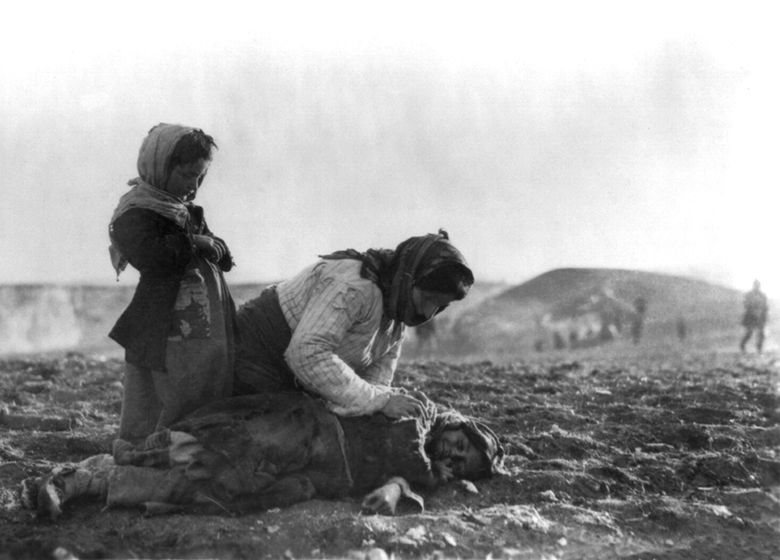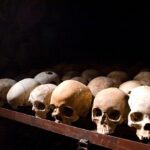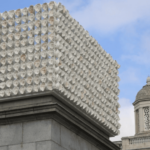Blog Post
The Ghosts of the Armenian Genocide Still Haunt Modern Turkey
By Jonathon Van Maren
The sun was shining on Istanbul’s Sultanahmet Square as I passed the gleaming white Obelisk of Theodosius and headed through the metal detector that guards the door of the Turkish-Islamic Arts Museum. It is a long building of rose-colored brick and stone, fronted by a row of high arched doorways lined with black bars and clusters of green bushes and the occasional palm tree. Built on the remains of the ancient Roman hippodrome, the building was restored centuries later by Sultan Suleyman the Magnificent as a gift to his grand vizier and childhood friend, Pargali Ibrahim Pasha who was strangled in 1536 when the sultan’s wife decided his influence posed too much of a threat to her own. But it was not this morbid history that I came to explore.
On April 24, 1915—Red Sunday—Minister of the Interior Talat Pasha gave the fateful order to hunt down hundreds of Armenian intellectuals throughout the city of Constantinople (renamed Istanbul in 1930). It was intended as a decapitation strike to devastate the Armenian leadership with a single blow, the opening act of the Genocide that would consume 90% of Turkey’s Armenian population.
Beginning at 8 p.m. and stretching through to the wee morning hours of April 25, Constantinople’s Armenian clergymen, doctors, journalists, lawyers, teachers, and politicians were jerked from their beds and locked up in the city’s infamous Central Prison. It took days for me to locate where, exactly, the Central Prison stands today. I finally discovered it in a 2013 Armenian Weekly article detailing a protest in front of the Museum during which the names of lost Armenian villages, swallowed by the crimson tide that followed Red Sunday, were listed defiantly through a loudspeaker. As it turns out, the Central Prison is now known as the Turkish-Islamic Arts Museum.
There was a fancy reception going on in the foyer when I entered, replete with chortling patrons stuffed into straining tuxes and solemn waiters gliding about with trays of expensive tidbits. Cameras were clicking frantically as I squeezed through the clusters of well-clad posteriors, passed through the sparsely stocked gift shop, and headed over to the enormous plaque affixed to the wall at the foot of the stairs leading to the courtyard. Tiny letters detailed the history of the Museum at length. There was no mention of it ever being known as Central Prison.
I combed the displays in exhibition halls accessible by low doorways lining the long brick corridors. I tried to imagine what the view of the imprisoned Armenian intellectuals might have been as I noted the woven rugs, the beautiful pottery, the ancient Korans. One section hosts Islamic relics, including a holy hair from the beard of the Prophet Mohammed himself. There was nothing, however, about the Museum ever having been a prison. Finally, I tracked down a staff member. There is nothing in the displays or on any of the plaques, I said. But is it true that the Turkish-Islamic Arts Museum used to be a prison? She looked at me quizzically, raised an eyebrow, and then nodded. “Yes. During Ottoman period.” That was as much as she would say.
Later, walking through the Blue Mosque with my wife, the mournful call to prayer began to sound from the minarets, echoing off the brick walls of the Turkish-Islamic Arts Museum. A thought struck me, and I asked a guide how long the Blue Mosque has sent the call to prayer out over the city. Centuries, she replied. Without a break? Even during the First World War? I asked. Yes, she nodded. Even then. I listened for a moment, and the call sounded sadder still. They would have heard it, I realized. In their cells, facing death—massacres of Armenians had already been taking place and several had been warned by sympathetic Turkish officials that this was coming—the imprisoned Armenian intellectuals would have heard the haunting call to prayer as they awaited their fate.
In that moment, they scarcely needed to be reminded to pray.
A Long History, an Independent Church
The Armenians are an ancient people, with the name Armenia said to be derived from Aram, their legendary ancestor and the direct descendent of Hayk, held in Armenian tradition to be one of Noah’s great-great-grandsons. According to the ancient Armenian historian Moses of Chorene, it was Hayk who defeated the Babylonian king Bel in 2492 BC and established the Armenian nation in the Ararat region, near the famous mountain where Noah’s ark had come to rest. Armenian roots in the region southeast of the Black Sea originate in the 7th century BC. Tradition tells of two of the twelve apostles, Thaddeus and Bartholomew, bringing Christianity to the Armenians between 40 and 60 AD. In 301, Armenia became the first nation to declare Christianity their state religion, an event marked by King Trdat III’s baptism by St. Gregory the Illuminator.
The Armenian Apostolic Church has existed independently of the Eastern Orthodox and Catholic Churches for over 1,500 years, and as a result has evolved into a major source of the Armenian identity. This is partially due to the fact that the Armenian church broke away from the other traditions in 451 AD over a dispute at the Council of Chalcedon, and also because of its centuries-long status as a Christian ‘island’ in a predominantly Muslim region. By the 16th century, the Armenians had suffered much the same fate as the rest of the Middle East and North Africa living under the rule of the Ottomans. Their status as a Christian minority made the Armenians both an object of suspicion and a convenient scapegoat. Pogroms erupted in 1890, 1893, 1895-96, and 1909.
I called Dr. Ronald Suny, emeritus professor of political science and history at the University of Chicago and Alex Manoogian Chair in Modern Armenian History at the University of Michigan, at his Michigan home to ask him about how the Armenian Genocide began. Suny, whose recent book “They Can Live in the Desert but Nowhere Else”: A History of the Armenian Genocide was hailed by many historians as a seminal work, has a personal connection with this history. His family fled to America to escape the massacres that foreshadowed the Genocide—his great-aunt had her throat slit by the Turks.








